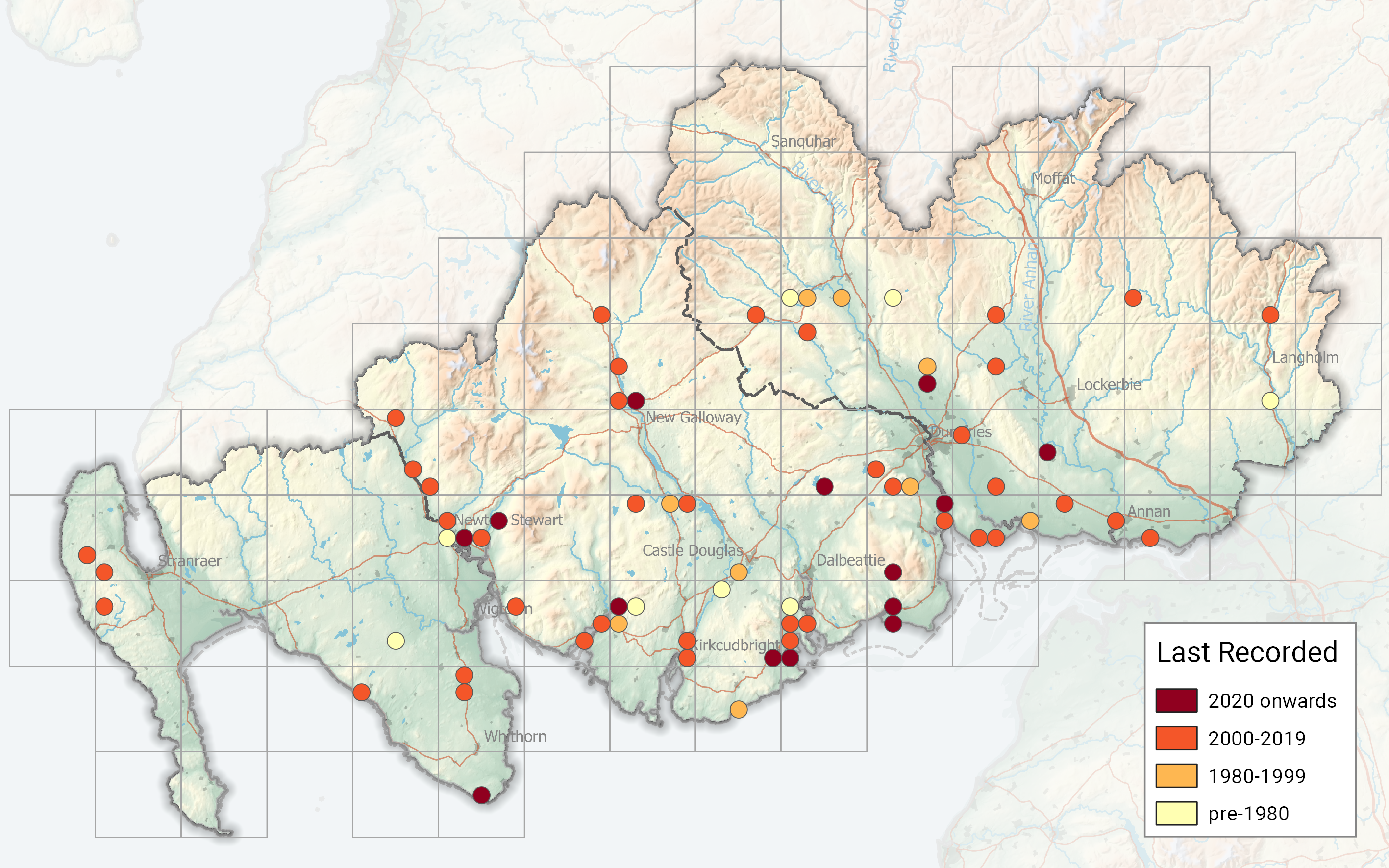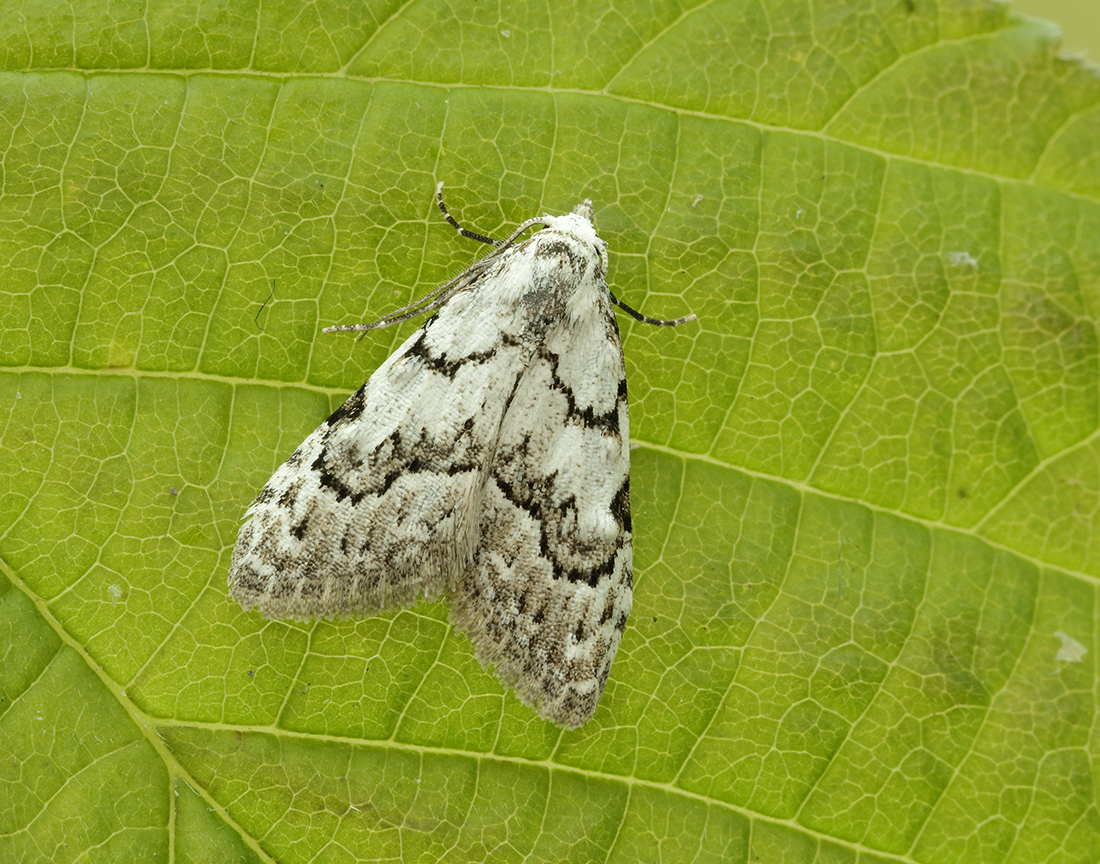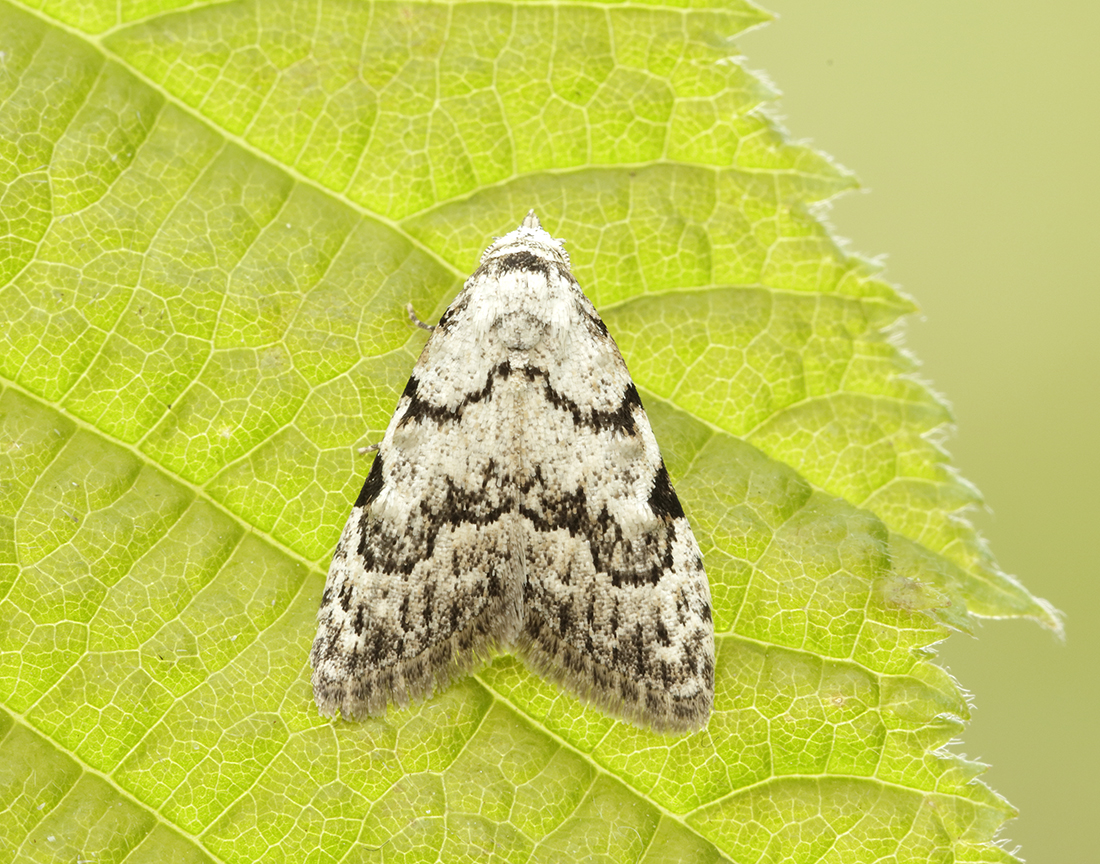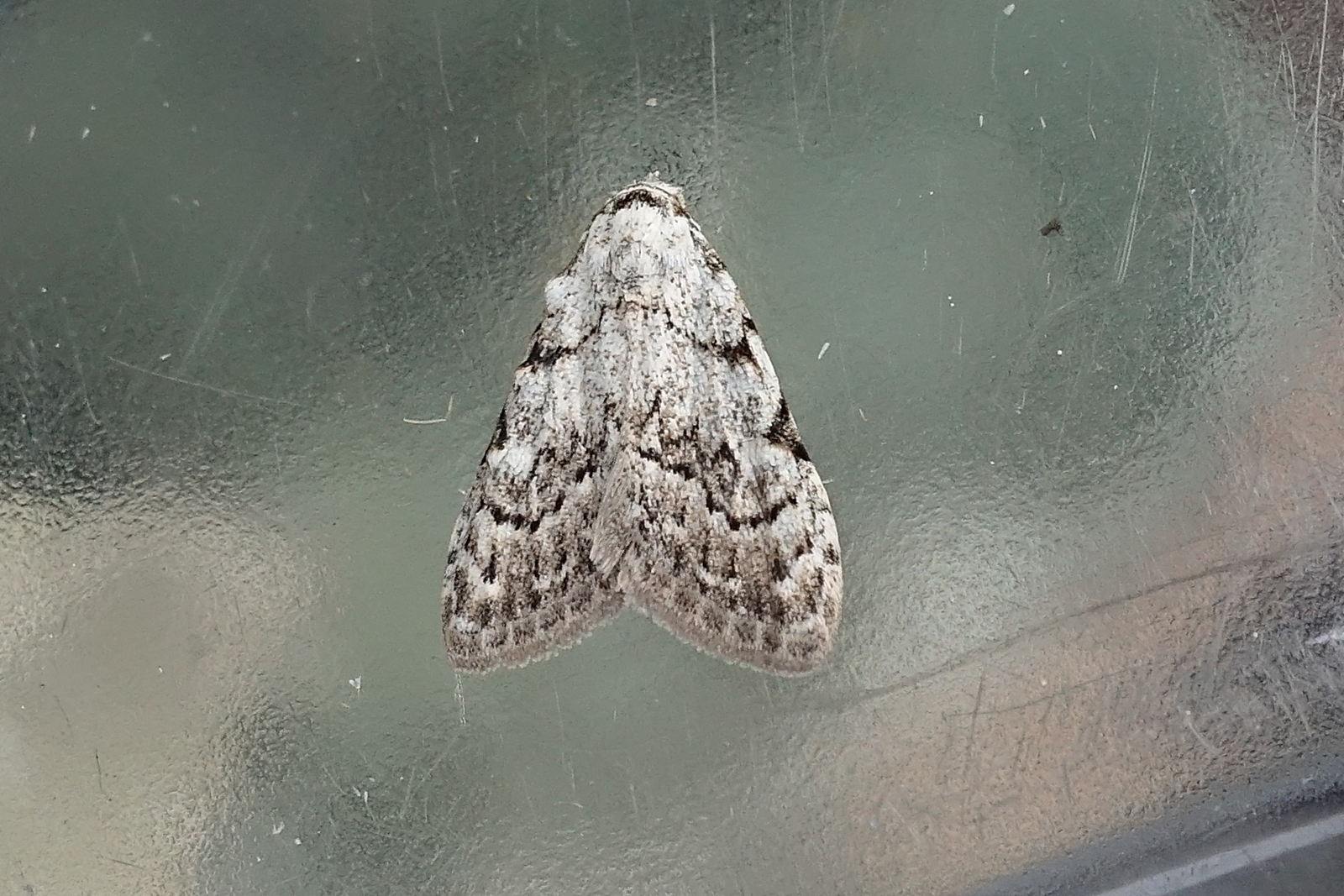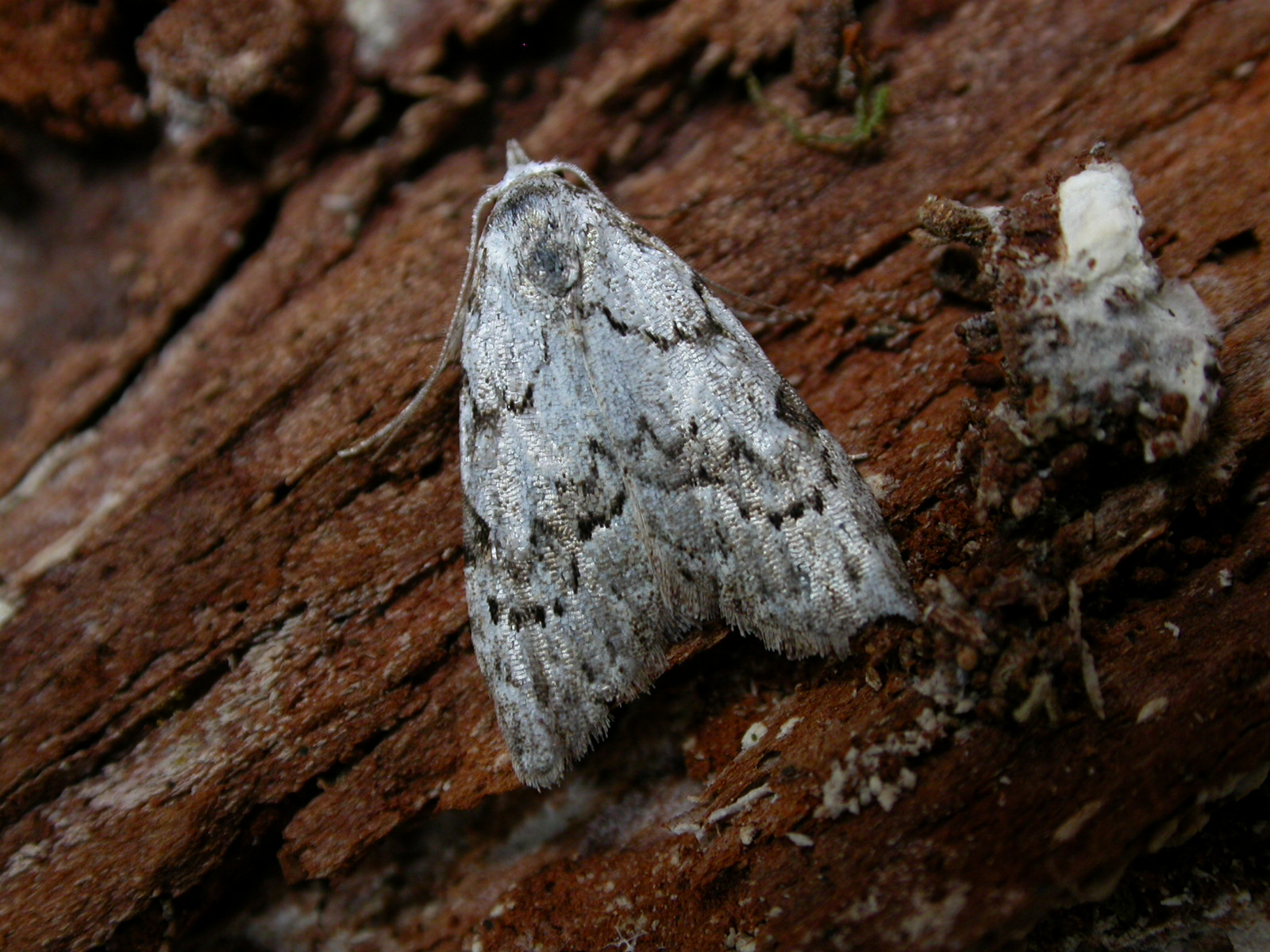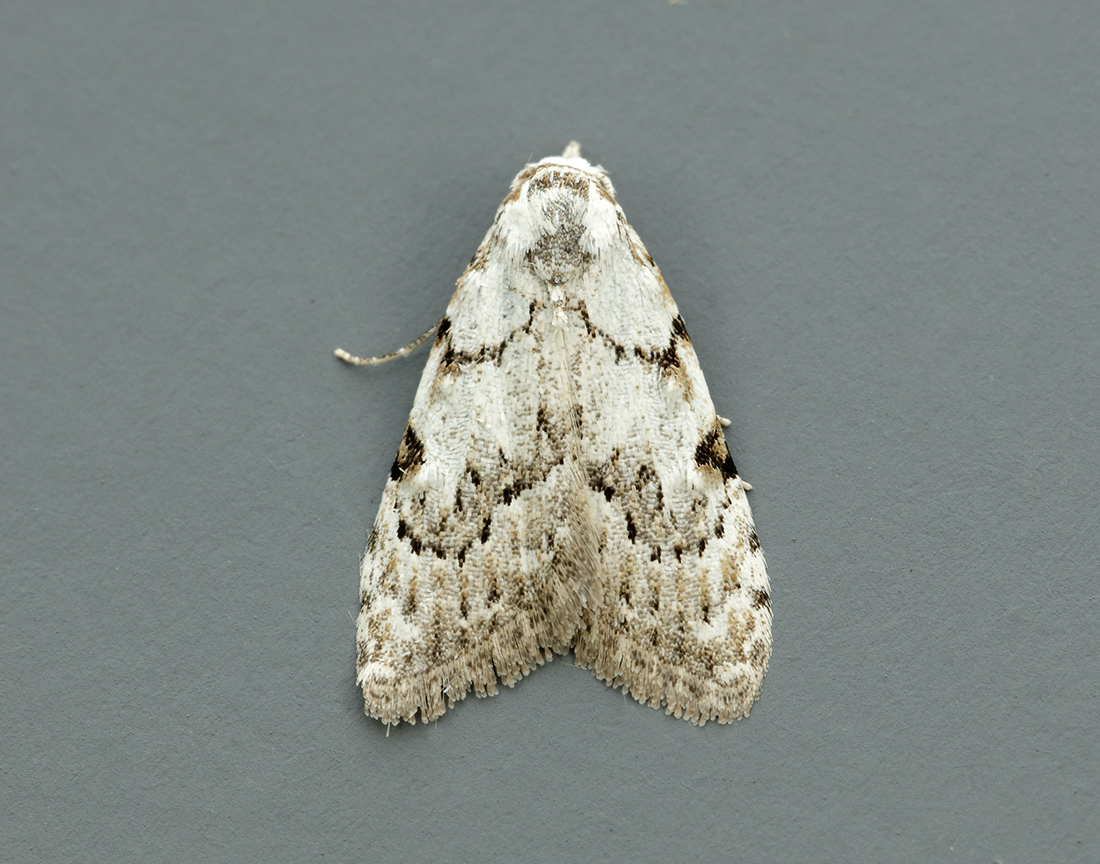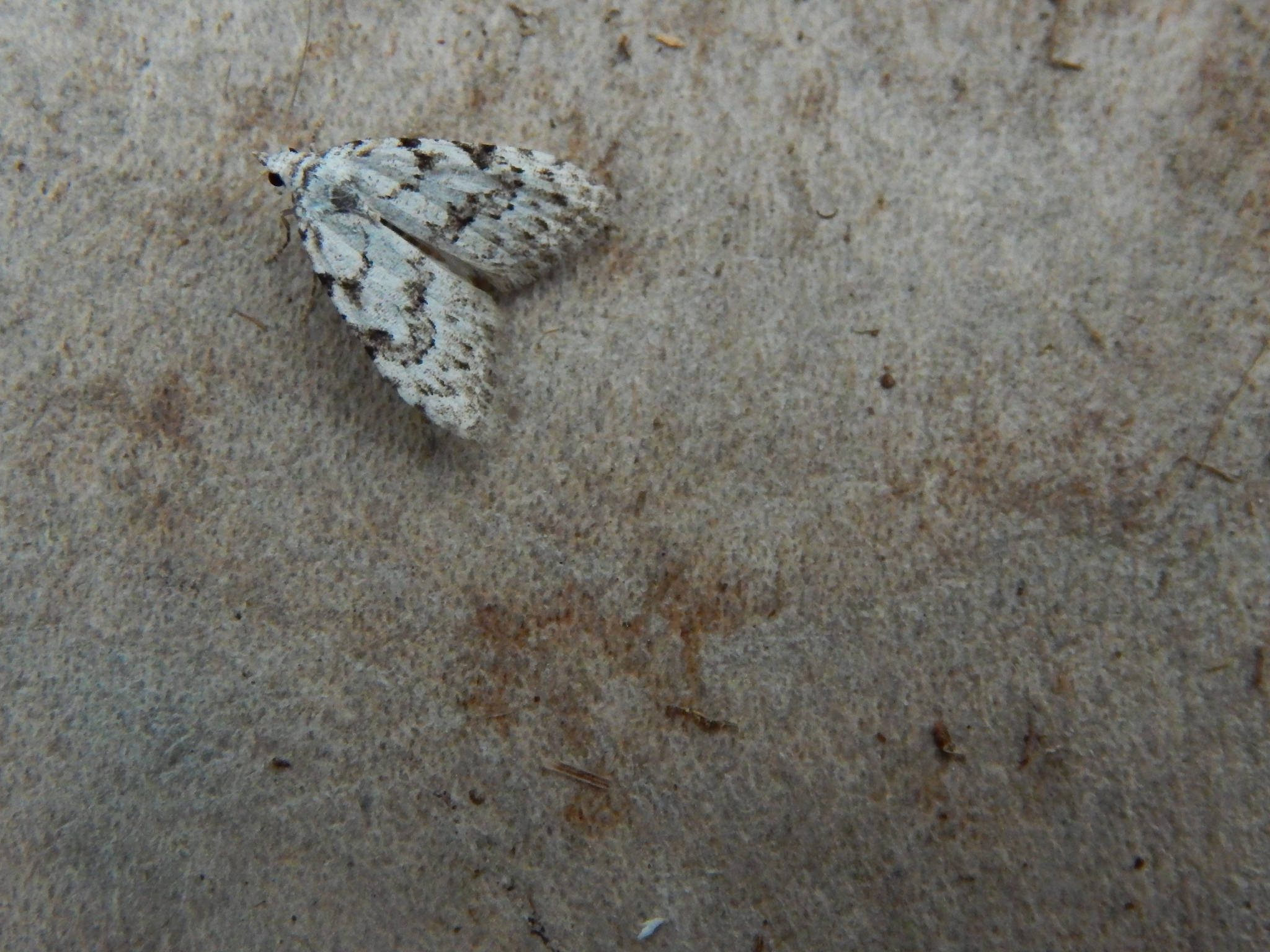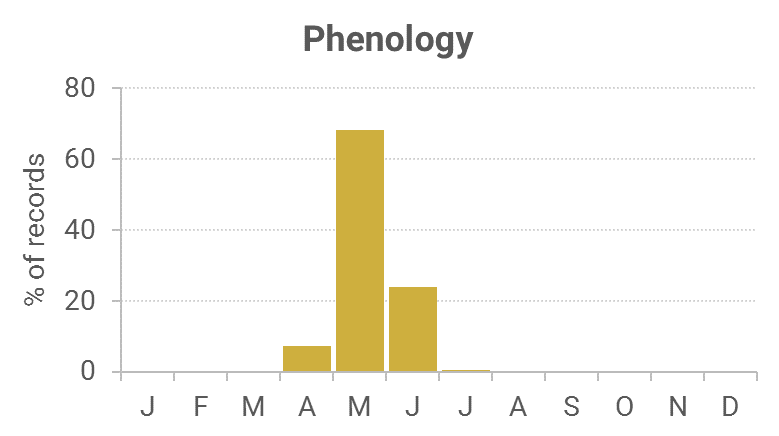Identification
Forewing whitish with fine black cross-lines. The innermost cross-line is right angled, the outer is strongly curved and resembles a question-mark.
Recording Method.
Attracted to light.
Life cycle
One generation. Overwinters as a pupa, in a cocoon. Larvae are present June to August.
Larval foodplants
A variety of broadleaved trees including Downy Birch, Blackthorn and oaks.
Habitat
Well-wooded areas, including parkland and gardens.
History
W. D. Robinson-Douglas was the first to record it when he found it at Orchardton (VC73) in May 1874. Gordon (1913) had found it to be rare having taken one flying at dusk on his front drive at Corsemalzie (VC74) 4th June 1906. He had also found several in White Dyke meadow, closeby, in June 1909 and 1910.
Sir Arthur Duncan (1909-84) during his lifetime had found it at Closeburn and Tynron (VC72). Archibald Russell (1944) listed it as occurring near Gatehouse of Fleet (VC73) during the years 1942-43.
During 1976-92 six of the Rothamsted stations recorded just over twenty records between them, Penninghame, strangely enough in a wooded area not recording it.
Of the century or so of records during 1992 to 2010, the regular trapped sites at Kirkton, Cally Woods, Carsfad near Dalry, Forest Moor and Old Torr/Auchencairn area were its strongholds, with the other twelve records from widespread sites. Strangely, it has not been recorded from Durisdeer a regular trapped wooded site in the north of the region.

